The Synodontis Petricola also known as Dwarf Lake Synodontis or the pygmy leopard catfish is a truly mesmerizing catfish with its unique and captivating appearance. Its elongated body is adorned with a striking pattern of black and white markings. The contrasting colours create a beautiful and eye-catching display, resembling intricate brushstrokes on a canvas.
The body of the Synodontis Petricola is adorned with elongated, filamentous fins that gracefully trail behind it as it glides through the water. Its slender body shape adds to its elegance, giving it a streamlined appearance that is both sleek and visually appealing.
One of the most captivating features of the Synodontis Petricola is its expressive eyes. Large and vibrant, they seem to sparkle with intelligence and curiosity, drawing you into their mysterious world. These captivating eyes are a true testament to the beauty and allure of this remarkable catfish.
With their enchanting appearance, the Synodontis Petricola is sure to captivate anyone who sets eyes on them. Their unique patterns, graceful movements, and expressive eyes create a mesmerizing visual spectacle that will leave you in awe.
Synodontis Petricola ‘s Natural Habitat
In its natural habitat, as observed from the perspective of a Synodontis Petricola, a fascinating world unfolds. The catfish inhabits the rivers and streams of Africa, where it finds shelter and food among various submerged structures and vegetation.
As the catfish navigates its surroundings, it encounters a diverse range of habitats. In the dimly lit depths, clusters of rocks and driftwood create intricate mazes, offering ample hiding places for the Synodontis Petricola. These natural hiding spots provide a sense of security and protection, allowing the catfish to rest and retreat from potential predators.
Delicate strands of aquatic plants sway gently in the water, creating a mesmerizing landscape. The Synodontis Petricola finds solace in the presence of these plants, utilizing them as cover to blend seamlessly into its environment. The dappled sunlight that filters through the water’s surface casts a mesmerizing play of light and shadows, adding an ethereal touch to the catfish’s surroundings.
As the catfish ventures further, it encounters a diverse array of substrates, ranging from sandy bottoms to gravel and rocky crevices. These various substrates offer the catfish opportunities to forage for food and explore their surroundings. The texture and composition of the substrate provide sensory stimulation as the catfish glides over them, enhancing its experience of the natural habitat.
Throughout its journey, the Synodontis Petricola encounters fellow aquatic inhabitants. Schools of small fish dart in and out of the vegetation, creating a lively atmosphere. Invertebrates, such as shrimps and snails, scuttle across surfaces, contributing to the intricate ecosystem within the habitat.
The water itself plays a vital role in the catfish’s natural habitat. Crystal clear and pristine, it allows for optimal visibility, enabling the catfish to navigate its surroundings with ease. The gentle flow of the water carries essential nutrients and oxygen, sustaining the diverse aquatic life within the habitat.
From the perspective of a Synodontis Petricola, its natural habitat is a tapestry of intricate details. The interplay of light and shadow, the presence of diverse vegetation, the textures of substrates, and the vibrant life surrounding it create a captivating and enchanting world that showcases the beauty and complexity of nature.
Keeping Synodontis Petricola Healthy
Keeping Synodontis Petricola healthy requires attention to water quality and suitable tank conditions. They are considered relatively easy to care for, making them suitable for both novice and experienced fish keepers.
Special Requirements and Feeding
Synodontis Petricola thrives in water temperatures ranging from 75-82°F (24-28°C). They prefer slightly alkaline to neutral water conditions, with a pH range of 6.8-8.5. Providing a well-balanced diet is important, including high-quality sinking pellets, live or frozen foods such as bloodworms and brine shrimp, and vegetable matter.
How Many Should I Keep?
Synodontis Petricola is typically kept as solitary catfish or in small groups of 3-5 individuals, depending on the tank size and compatibility with other tank mates.
Lighting Preference
Dwarf Lake Synodontis does not have specific lighting preferences and can adapt to various lighting conditions.
Suitable Tank Mates
Synodontis Petricola is generally peaceful towards other fish but can display territorial behaviour towards their own species. They are compatible with a variety of community fish, as long as the tank mates are not overly aggressive or prone to fin nipping.
Breeding Synodontis Petricola
Breeding Synodontis Petricola can be a rewarding and fascinating experience. While it may require some effort and patience, the process allows you to witness the life cycle of these remarkable catfish. Here is a detailed account of breeding Synodontis Petricola:
- Preparation: Create an ideal breeding environment by setting up a separate breeding tank. The tank should be spacious enough to accommodate the breeding pair, with appropriate hiding places such as caves or PVC pipes. Maintain optimal water parameters, including temperature, pH, and water quality, to ensure the health and well-being of the catfish.
- Pairing: Introduce a compatible male and female Synodontis Petricola into the breeding tank. It’s important to ensure that the pair is mature and in good condition for successful breeding. Provide plenty of hiding places to establish territories and reduce stress.
- Courtship and Spawning: The male catfish initiates the courtship process by displaying various behaviours. He may chase the female, exhibit territorial defence, and engage in fin-flaring displays to attract her attention. Once the female is receptive, she will respond by showing submissive behaviour.
- Egg Laying: The female will lay adhesive eggs on the chosen substrate or in a chosen cave. She carefully attaches the eggs to the surface while the male guards the territory and fertilizes the eggs. The number of eggs can vary but typically ranges from a few dozen to a few hundred.
- Incubation: After fertilization, the male diligently guards the eggs, ensuring their safety and oxygenation. The incubation period typically lasts for several days, during which the male carefully tends to the eggs by fanning them with his pectoral fins to maintain proper water circulation.
- Hatching and Fry Care: Once the eggs hatch, the fry emerge and are highly vulnerable. At this stage, it’s crucial to provide suitable hiding places and ample food for the fry’s survival. Offer small live or frozen foods, such as baby brine shrimp or microworks, to meet their nutritional needs.
- Growth and Development: As the fry grow, their dietary requirements change. Gradually introduce a varied diet that includes high-quality commercial fry food, finely crushed flakes, and small live or frozen foods. Regular water changes and maintenance of optimal water conditions support their healthy growth.
- Separation: When the fry reach a certain size and are more independent, consider separating them from the adults to prevent predation and competition for resources. Transfer them to a grow-out tank with suitable conditions for their continued development.
Breeding Synodontis Petricola can be challenging due to their specific requirements and behaviours, but with proper care, attention to detail, and suitable conditions, you can successfully witness the breeding process and contribute to the conservation of these fascinating catfish.
Sexual Dimorphism
Sexual dimorphism in Synodontis Petricola or Dwarf Lake Synodontis is not easily distinguishable, with both males and females exhibiting similar physical characteristics.
Lifespan
With proper care, Synodontis Petricola – Dwarf Lake Synodontis can live for 8-10 years or even longer.
Distribution
Synodontis Petricola is a naturally occurring species found in the rocky areas of Lake Tanganyika, specifically in the Democratic Republic of the Congo and Zambia.
Summary
Synodontis Petricola, with its distinctive appearance and manageable care requirements, is an appealing addition to aquariums. With attention to water quality, suitable tank conditions, and a well-balanced diet, these catfish can thrive and bring enjoyment to fish keepers.
Dry Goods Delivery.
The store has provided information regarding their order dispatch and estimated delivery times. Here are the key details:
- Dispatch Timeframe: Orders placed before 2pm will be dispatched on the same day. Orders placed after 2pm will be dispatched on the next working day.
- Delivery Date and Time Guarantee: While the store aims to dispatch orders promptly, they cannot guarantee a specific delivery date and time. As the delivery process relies on couriers, there may be factors beyond their control that could affect the delivery timeframe.
- 1st Class Mail: For orders sent via 1st Class mail, the aim is to have them delivered on the next working day after dispatch.
- 2nd Class Mail: Orders sent via 2nd Class mail typically take approximately 2-3 working days for delivery after dispatch.
- APC Next Day Delivery: APC Next Day delivery is available for UK mainland postcodes. It is usually delivered on the next working day after dispatch. However, please note that items being delivered to more remote areas may require additional time for delivery.
It’s important to keep in mind that while the store strives to provide efficient delivery services, unforeseen circumstances or external factors could potentially impact delivery times. For further details or specific inquiries about delivery, customers should refer to the store’s terms and conditions or contact the store directly.
Livestock Delivery.
The store maintains specific policies regarding the delivery of livestock. Here are the key points:
- Licensed Livestock Courier: The store exclusively uses a licensed livestock courier for shipping fish and coral. This approach is chosen to ensure responsible and ethical transportation of the livestock.
- Livestock Shipping Fee: The livestock shipping fee charged to customers of £19.99 does not cover the true cost, and therefore, there is a minimum spend requirement of £30.00 before the option for livestock shipping becomes available.
- Pre-Arranged Delivery: The store never ships livestock without first arranging a suitable delivery day. Before dispatching the livestock, the store must confirm the agreed-upon delivery day with the customer.
- Saturday Delivery Confirmation: Customers who choose Saturday delivery must have their availability confirmed for the upcoming Saturday before the store sends out the livestock. This confirmation ensures that the livestock can be received promptly.
- Failure to wait for livestock: Not waiting for livestock, even if there is a reasonable delay, or cancelling an order after it has been dispatched will lead to you incurring charges for an emergency return to the base. Additionally, any losses of livestock will also be charged to you. Please be aware that the items you are ordering are living creatures – livestock. We kindly ask that you refrain from ordering livestock if you are unable to accommodate the possibility of a delayed delivery.
These terms and conditions are a fundamental aspect of our policy. Our primary goal is to dissuade individuals who could react negatively to a delayed delivery and subsequently request order cancellations. It is of utmost importance to underscore that your order pertains to living creatures, not mere inanimate objects. In the event of an occasional delay, it is crucial that you respond in a rational and responsible manner, taking into account the welfare of the livestock. We kindly request that you refrain from placing an order for livestock if you tend to react strongly to such situations. By proceeding with the order of livestock, you indicate your acceptance and agreement to abide by these specified terms and conditions.
- Signature Requirement: Livestock deliveries require a signature upon receipt and cannot be left in a safe location. This precaution ensures proper handling and the well-being of the livestock.
- Geographic Restrictions: The courier has strict geographic restrictions for livestock deliveries. Unfortunately, deliveries to Northern Ireland, Republic of Ireland, Isle of Man, Isles of Scilly, Channel Islands, and certain Scottish offshore postcodes may not be possible. Customers are encouraged to contact the store via email to confirm if livestock delivery is available in their area.
- Minimum Order Value and Order Cancellations: The store has a minimum order value of £30 for livestock shipping. Additionally, the store reserves the right to cancel orders that are deemed high-risk or involve a high number of single tropical freshwater fish species.
It is essential for customers to familiarize themselves with these policies before making a purchase. For more detailed information or specific inquiries, customers should consult the store’s terms and conditions or reach out to the store directly for clarification.
Livestock Geographical Exemptions.
The store has specific geographical exemptions for livestock deliveries. Here is a list of the areas and postcodes where livestock delivery is not available:
- Islands: Livestock cannot be delivered to the Shetlands, Channel Islands, and Isle of Man.
- Postcodes: Livestock delivery is not available to the following postcodes:
- AB30 to AB39, AB41 to AB45, AB51 to AB56
- DD8 to DD10
- BT all
- DG3 to DG9, DG12 to DG14
- KA18 to KA19, KA26, KA29 to KA30
- HS all
- IM all
- JE all
- ZE all
- KW15 to KW17
- TD9
- FK17 to FK21
- GY all
- KA26, to KA28
- PA20 to PA38, PA41 to PA49, PA60 to PA61, PA76 to PA78
- TR21, to TR25
- PH3 to PH26, PH30 to PH44
- IV all
Customers residing in these areas should be aware that livestock delivery is not available to their location.
We can ship livestock to the Isle of Wight, this area is subject to a surcharge.
For further information or specific inquiries about livestock delivery to a particular area, customers are advised to contact the store directly for clarification.
Cancellation.
According to the store’s policy, customers have the right to cancel an order within 14 working days of receiving the goods. To initiate the cancellation, the goods must be returned to the store in new and unused condition, adhering to their Returns Policy.
Important points regarding the return process are as follows:
- Return Condition: The goods must be returned in new and unused condition, as originally received. It is important to ensure that the goods are in the same condition as when they were sent out.
- Return Timeframe: The goods must be received by the store within 21 days of notifying them about the cancellation. During this time, customers are responsible for any loss or damage that may occur during the return shipping process.
- Refund Process: Once the store receives the goods in new and unused condition, they will initiate the refund process. The purchase price will be refunded to the customer.
- Return Condition Inspection: If the returned goods arrive in a condition that is less than what they were sent out in, the store reserves the right to return the goods to the customer, and no refund will be processed.
It is essential for customers to carefully review the store’s Returns Policy and follow the specified procedures to ensure a smooth and successful return and refund process. For more detailed information or specific inquiries, customers should consult the store’s terms and conditions or contact the store directly.
Returns.
According to the store’s return policy, the following guidelines should be followed for returning goods:
- Use Returns Form: Customers need to use the store’s provided returns form to initiate the return process. This form helps the store acknowledge that the goods are being sent back.
- Return for Testing: If the goods are being returned for testing, the customer is responsible for covering the return shipping expenses.
- Refund of Postage Fees: The store will only refund postage fees if the order arrives damaged or becomes faulty within the first 4 weeks of purchase. Proof of posting is important, and customers should ensure the goods are well-packed and obtain proof of posting as the goods remain their responsibility until received by the store.
- Refund of Postage Costs for Replacement: If goods are being returned within 7 days of purchase under the Replacement Policy, the store can refund postage costs. However, the customer needs to agree on a delivery service with the store in advance, and only standard or tracked shipping fees will be refunded. The store cannot refund the cost of any special delivery service.
- Non-Refundable Postage: Postage costs for goods returned for any other reason than those mentioned above are non-refundable. The store reserves the right to deduct the original postage cost from any applicable refund.
- Mistaken Purchases: If a customer has made a mistake in their purchase, they need to return the goods to the store. The customer is responsible for the return shipping costs in such cases.
It is important for customers to carefully follow the store’s return procedures and terms and conditions. For further details or specific inquiries, customers should refer to the store’s website or contact the store directly.
Replacements
If customers receive faulty goods, the following guidelines apply according to the store’s policy:
- Notification of Faulty Goods: Customers must notify the store within 7 working days if they receive faulty goods. This notification should be made as soon as possible.
- Replacement Parts: If possible, the store will dispatch replacement parts for the faulty goods.
- Return of Goods: If replacement parts are not possible, the store may request customers to return the faulty goods in accordance with their Returns Policy. The specific return procedures and conditions should be followed.
- Verification of Damage: Once the store receives the returned goods, they will verify the damage. If the damage is confirmed, the store will supply the required replacements.
- Return Postage Costs: If the goods returned to the store are found to be in good working order, the store is not able to refund the return postage costs. Additionally, the store reserves the right to deduct their original postage cost from any applicable refund.
- Consequential Loss or Damage: The store cannot take responsibility for any consequential loss or damage that arises directly or indirectly from the goods supplied.
Customers should carefully review and adhere to the store’s Returns Policy and procedures for returning faulty goods. For further clarification or specific inquiries, customers should consult the store’s terms and conditions or contact the store directly.
Manufacturer’s Guarantees
The store works in collaboration with manufacturers to ensure that their guarantees are honored, and they make their best efforts to resolve issues within the warranty period. The following guidelines apply to refunds and replacements:
- Postage Costs under Manufacturer’s Guarantee: Postage costs can only be refunded if the goods are returned to the store within 7 days of the original purchase, as per the manufacturer’s guarantee.
- Refund of Postage Costs for Faulty Goods: The store will refund postage costs for guarantee/warranty returns only if the product becomes faulty within the first 4 weeks of receipt.
- Replacements with Manufacturer Authorization: Replacements, whether parts or goods, can only be offered when authorized by the manufacturer. Customers should contact the store for further guidance in such cases.
- Prior Approval for Returns: Goods should not be returned to the store without prior approval. Customers need to contact the store and obtain approval before returning any items.
- Replacement of Glass or Ceramic Items: Glass or ceramic items can only be replaced if the store is notified within 48 hours of receiving the delivery.
- Replacement of Glass Bulbs/Tubes: Glass bulbs or tubes can only be replaced if they become faulty within 14 days.
Customers should note and adhere to these guidelines to ensure a smooth and efficient resolution of any issues with their purchased items. For specific inquiries or further information, customers are advised to refer to the store’s terms and conditions or contact the store directly.
Breakages
According to the store’s policy, customers have the following responsibilities regarding breakages:
- Checking Goods on Arrival: It is the customer’s responsibility to thoroughly check the goods upon arrival for any damage. This should be done before signing for the parcel. If the parcel appears damaged, it is advised not to sign for it.
- Reporting Breakages: Any breakages or damages must be reported to the store within 48 hours of receiving the goods. It is important to promptly notify the store to initiate the resolution process.
By carefully inspecting the goods upon arrival and reporting any breakages within the specified timeframe, customers can ensure that appropriate actions are taken to address the issue. For specific instructions on reporting breakages or further information, customers should refer to the store’s terms and conditions or contact the store directly.

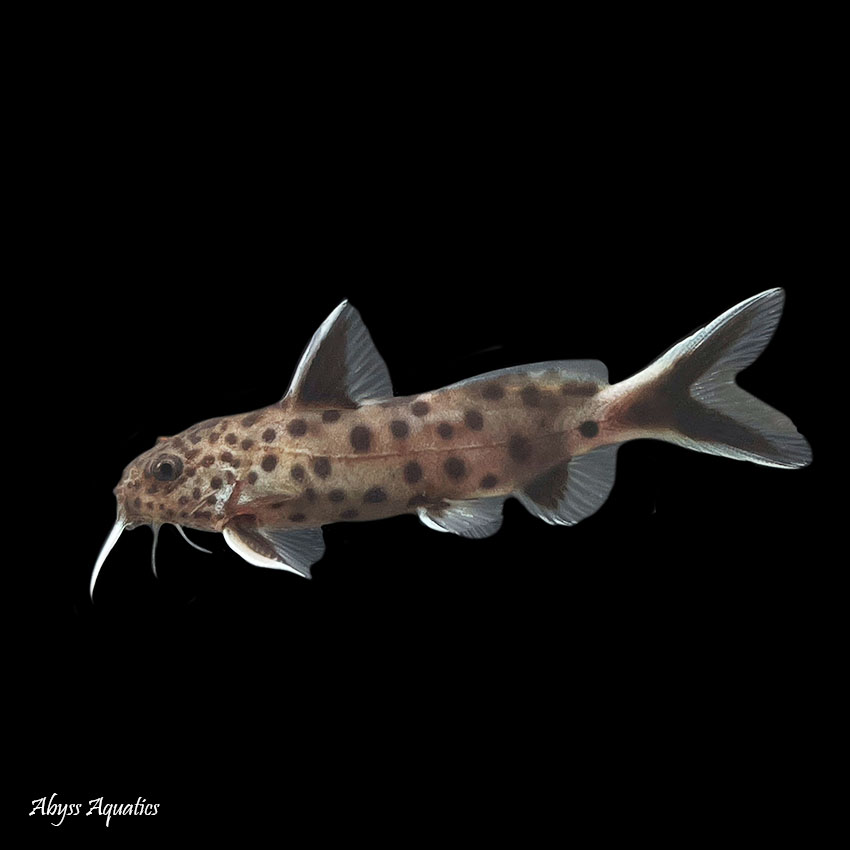
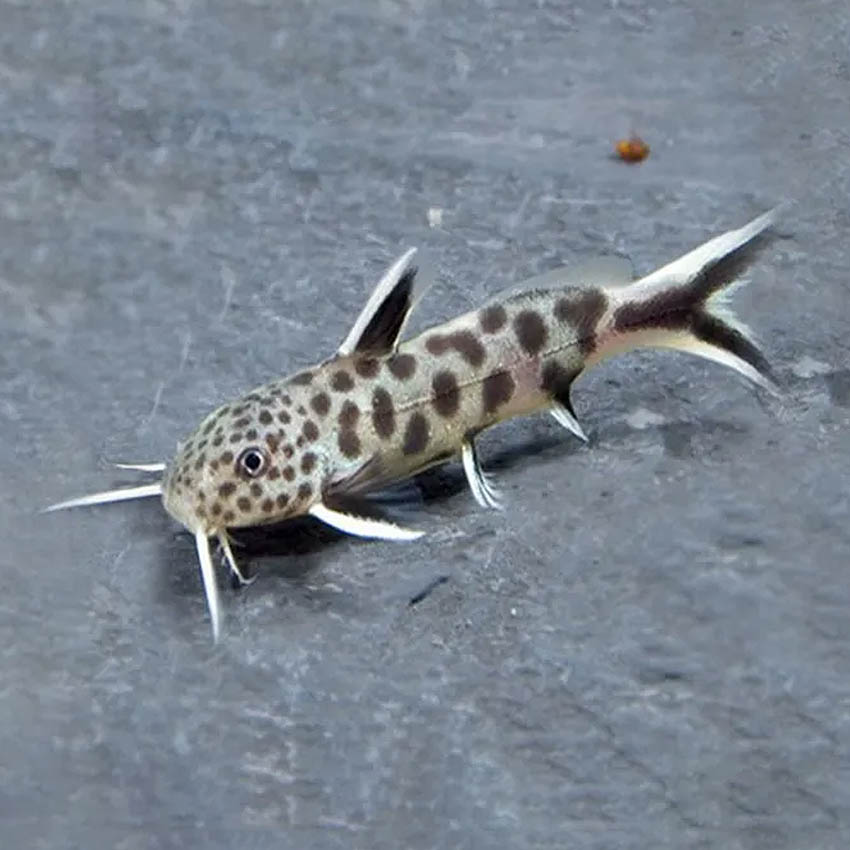
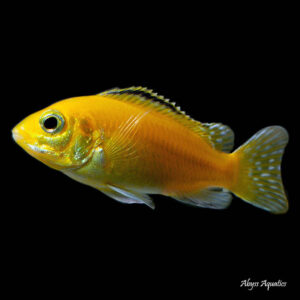
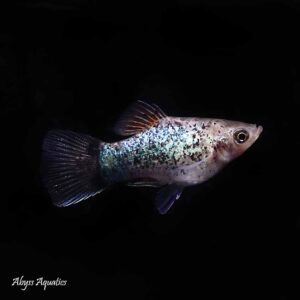
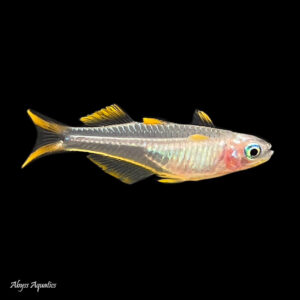
Chris (verified owner) –
Ordered 10 of these they arrived the very next day all perfectly healthy and stunning fish thank you